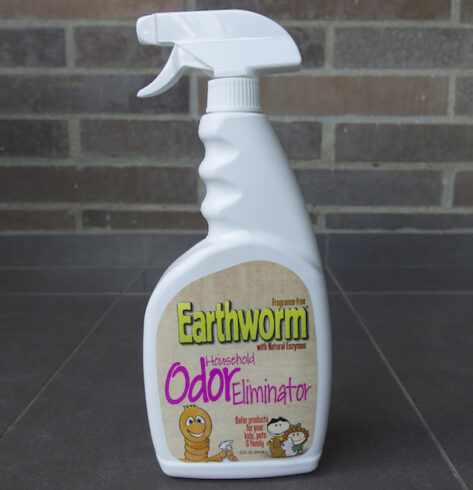The following are novel air fresheners that can be used by the chemically sensitive. Remember that chemically sensitive folks are all different, so not everyone can use all of the options here. Be sure to do a small test first to see how you do.
This article contains affiliate links, upon purchase I make a small commission at no extra cost to you.

1. Simmering Recipes for the Home

I tried various natural DIY air fresheners including the popular Pinterest post on simmering vanilla, rosemary, and lemon.
This method was “so-so” at producing a noticeable aroma (if you grate the lemon rind before adding it you will get more lemon scent out).
I also tried simmering black tea with spices (cloves, cinnamon, nutmeg), which worked, but it was mild.
Mild can be good for the chemically sensitive!
2. Food-Based Aromas for the Home

If you cannot tolerate simmering spices to create aromas, but need to have your house smelling good, you can brew coffee or bake cookies in the oven.
This is a wonderful and safe way to add that feel-good feeling to a house that won’t trigger anyone’s allergies.
Potted herbs like basil could also produce a nice aroma if you have a good amount of it at full growth. It’s not very noticeable for many people. Other herbs like thyme and oregano have even less of an aroma.
3. Wood and Plant-Based Aromas for the Home

Eucalyptus branches from the florist have a significant aroma to them. You can make a pretty strong impression in a room with a vase of dried eucalyptus.
I personally like using sweetgrass, which is a traditional Native American plant, that has a beautiful aroma to it .
A natural “mothball” that protects clothing and also produces a pleasant aroma is real cedarwood placed around clothes in the closet.
Folks have said just the wood is enough to protect the clothes from moths.
If you really like the smell of cedar, you can add cedarwood essential oil to the wood. Wood holds on to essential oils nicely. You can also add an essential oil mix with a cedar base.
4. Natural Beeswax Candles

Beeswax candles are an alternative to scented candles.
Even soy candles are not usually suitable for the chemically sensitive.
But beeswax candles have a gentle and more subtle natural aroma that is tolerable for most chemically sensitive folks.
Some beeswax candles have essential oils added for more of a scent.
5. Removing Malodors, Naturally without Scents

You may also consider removing odors instead of adding scents.
Enzyme Cleaners to Break Down Odors
Strategies like using enzyme cleaners to properly and safely break down and degrade pet odors (and other problematic odors) is a great way to get a proper clean.
Clean has no smell, and even if you are staging the house to sell it, no odor could be a selling point.
Sorbent Materials (Absorb Odors)
To absorb odors, I like charcoal sachets used around the house.
Zeolite absorbs odors and it can be used as a powder that is vacuumed up, or as a spray (I’m not a proponent of those methods because it’s not safe to breathe in zeolite that has been sprayed or dispersed around a room). It is safer to use the little pebble form and put that into sachets.
Many chemically sensitive people have recommended Deoderoc, which is also made of natural minerals (possibly zeolite) and is reported to work well.
Mineral Technologies to Break Down Odors
1. ZorbX is an interesting product. They don’t mention any ingredient which is normally a red flag for me. By reading the patent one could guess that it is made of zinc salt of ricinoleic acid, and a solubility promoter including sodium iminodisuccinate, and water.
Some versions of Zorbx are unscented though the patent says they might contain antifungals (which I have had problems with in the past). Not knowing what’s in it and if it contains an antifungal makes me a little wary, however, I go by my own reactions to products.
2. EnviroKlenze is a company that makes many odor-neutralizing blocks and liquids made of minerals and metals. They contain magnesium hydroxide/magnesium oxide, zinc oxide, and titanium oxide.
6. Essential Oils for the Chemically Sensitive?

Many people with chemical sensitivities don’t tolerate essential oils. Know that this can be an accessibility barrier. If you are selling a house this may not be the best natural air freshener.
If you do tolerate them, you should use them in non-volitile ways, since nebulisers and diffusers create high levels of PM 2.5 and VOCs.
Stick to high quality brands, Plant Therapy is a really good one.
The most tolerable essential oils tend to be vanilla, citrus, as well as peppermint. But individual tolerance varies greatly.
Related Posts:
- Non-toxic alternatives to Febreeze
- Cleaning products for the chemically sensitive
- Removing Febreeze, smoke, and other chemical residues
Corinne Segura holds certificates in Building Biology, Healthier Materials and Sustainable Buildings, and more. She has 10 years of experience helping others create healthy homes.

Leave a Reply